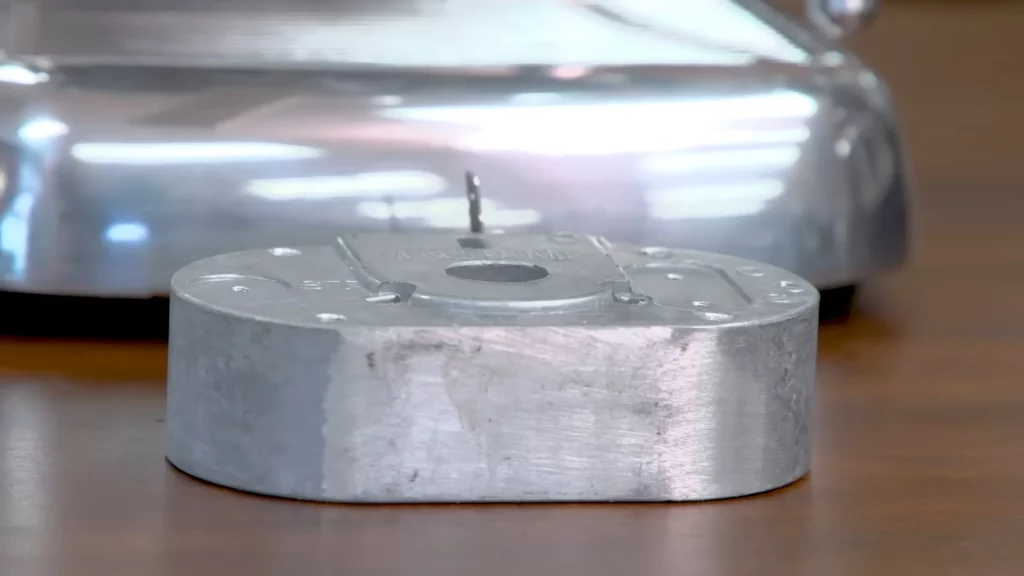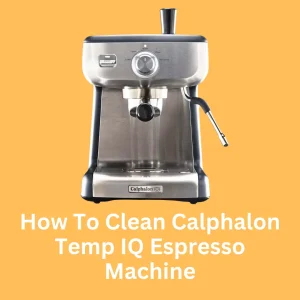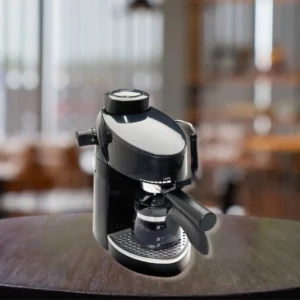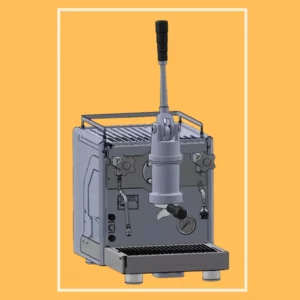Affiliate Disclaimer
As an Amazon Associate, I earn from qualifying purchases. It supports the website. So, Thank you. ❤️
As a coffee lover, you would desire a cup of coffee of excellent quality, no matter wherever you go, right? Mind you, heaters are very essential for getting high-quality coffee. So, to help you choose the best heater, I’ve brought you a competitive comparison between Thermocoil vs Thermoblock vs Boiler Heating Systems.
Thermoblocks, boilers, and thermocoils are the primary technologies used today to heat water for espresso. But, just as every new piece of technology has its own set of pros and cons, the same also applies to heaters.
So, if you are thinking of buying one, then look no further. Just read this article till the very end to know which heater suits you best.
What Is The Thermocoil Heating System?
Well, the thermocoil is the heating mechanism that extracts water from the reservoir and heats it at a constant temperature. This technology is common in home espresso machines. It functions by brewing, steaming, or both.
What Is A Thermocoil Made Of?
Aluminum is the most common material for the thermocoil’s outer shell. But the embedded pipe is made of copper or stainless steel.
How Does A Thermocoil Work?
Thermocoils somehow work on the same principle as other heaters, but they could be different in many aspects depending on their quality and service.
There are some thermocoils that exist in the shell of the machine. These units have a dual purpose. First, they heat the water in the brew chamber then, they extract water from the tank through the twisting passages to generate steam.
Inside a thermocoil, only trace amounts of water flow at any given moment are allowed to move through the tubes. This ensures that each drop of water receives an equal amount of exposure to the heating element, causing it to boil.
The chamber allows for a more thorough and circular movement of the water. This results in the water maintaining an average temperature.
Advantages:
You might notice that far more coils are being used in the new espresso machine. Do you know why it is happening? Well, in some cases, the thermocoil is better than any other heating system.
So, let’s look into the advantages of thermocoils:
Consistency:
One of the problems with heaters is that they do not remain the same all the time. They become obsolete over time. But it depends on the materials that they are made of. Thermocoils are consistent compared to other thermal systems because of their production materials.
Durability:
Another advantage of Thermocoil is durability. They can sustain themselves in the long run. They can remain functional and undergo a lot of pressure.
Fast:
Thermocoils are quicker and more convenient in comparison with thermoblocks. These machines have a thermocoil that can provide you with quick service with more comfort.
Disadvantages:
There are also some cons to thermocoils. Such as:
What Is A Thermoblock Heating System?

Thermoblocks are the most common type of heating system used in espresso machines. The thermoblock is a component that is utilized in espresso machines. It is possible to use it as an independent heating element that heats the cold water and then transports it to the brewing group.
What Is A Thermoblock Made Of?
Aluminum, brass, and stainless steel are all common materials used in the construction of Thermo blocks. Some Thermo blocks have an aluminum body with stainless steel pipes as part of their design, creating a composite material.
Two plates of metal are used in the construction of the most basic thermoblocks. One of the plates has a spiral cut into it so that water can flow through it. A seal is installed between the two to prevent the system from developing leaks.
Other kinds of Thermo blocks consist of nothing more than a string of heaters that run along the length of a pipe.
How Does A Thermo Block Work?

A thermoblock is a type of metal block that has heating elements embedded into it as well as a pipe that runs through it.
The temperature of the water can be determined by the amount of heat it has absorbed from the block along the length of the pipe.
Even though the water is only in contact with the thermoblock for a brief period of time, it can still be capable of experiencing rapid heating to temperatures that are high enough to produce dry steam.
Advantages:
Here are some of the advantages of thermoblocks.
Affordable:
These heaters are quite inexpensive and easy to find. Moreover, the espresso machines that come with a thermoblocker are also quite affordable.
Saving Energy:
Water does not need to be preheated in thermoblock espresso machines. When not needed, these heaters stop heating the water, saving a lot of energy.
No Lime Sticking:
The water that is contained within the pipes is directly discharged. This eliminates any possibility of lime sticking to the inside wall of the pipe.
Available and Repairable:
Thermoblocks are widely available and can be repaired very easily. This is one of the biggest reasons for choosing them.
Disadvantages:
These heaters have some drawbacks, like:
What Is A Boiler Heating System?

A boiler is the most reliable option when it comes to heating systems. It is because it maintains a constant temperature at all stages of the brewing process. It is also the system that costs more bucks and is utilized by the vast majority of commercial espresso machines.
Stainless steel boilers that can be warmed over an open flame were used in the first espresso machines. But, as time went on, these machines started to upgrade and use electric heat.
Some coffee machines have single boilers or double boilers to produce hot water for both steaming and making espresso. You will only need to totter a switch if sometimes you need to switch between steaming and brewing.
What Is A Boiler Made Of?
Metal is used to make boilers because it conducts heat well, doesn’t rust, and is cheap. The boilers of espresso machines are made out of one of several different metals, like aluminum, stainless steel, copper, or brass.
Not all materials are used in making boilers at the same time. It depends on the brand quality. Many cost-conscious manufacturers use aluminum in entry-level espresso machines.
Again, sometimes stainless steel is used instead of aluminum. Mid-tier and high-end espresso machines use brass, which costs more than aluminum or stainless steel but performs better. In the end, copper is more conductive than brass but costlier. In fact, copper is the best-performing metal.
How Does The Boiler Heating System Work?
In its most fundamental form, a boiler’s job is to heat and store the pressurized water that has been delivered by a pump. When turned on, electricity circulates through the element, producing heat. When turned off, the element is non-active and does not produce heat.
The boiler has a single heating element and two thermostats. One of the thermostats is set to keep the temperature within a range that is best for making coffee. The other is heated to a point where water will boil and produce steam when it is used.
Advantages:
In a nutshell, a boiler is the best way to heat water and keep it at the right temperature all the way through the brewing process.
Even though pump-driven systems have replaced lever-operated systems in many places, the traditional boiler-based heating unit is still used. It is because it has a lot of advantages, like
Consistency:
The boilers are the most consistent in temperature. They can keep the water hot for a long time, so that you may not have to wait every time.
Durable:
Boilers have many benefits, one of which is their durability. They have the potential to be it in the long run. Even though they have to deal with a lot of stress, they are still able to do their jobs.
More capacity:
Boilers have more capacity to heat water than any other heater. Espresso machines that come with a boiler can hold more water so that you don’t need to refill the tank every time.
Disadvantages:
With advantages, boilers also have some disadvantages.
Thermocoil vs. Thermoblock vs. Boiler Heating System
Heaters are an essential part of a coffee maker. It controls the water temperature. Plus, it also controls the rate at which it heats up and the amount of steam produced. Most importantly, the heating system has a direct influence on the quality of the espresso drink.
The Thermoblock, the Thermocoil, and the Boiler are three different ways that manufacturers have come up with to heat water. This is because keeping the temperature even during the brewing process is important for making good espresso.
In an espresso machine, the temperature of the water is controlled by one of these three systems. Each one comes with its own particular set of advantages and drawbacks.
Let’s now compare these 3 different heaters to get a better understanding of which one is the best.
Thermocoil vs. Thermoblock
Thermoblocks are the basic heating machines used in homes. These are the most affordable and widely available heaters on the market. They are excellent heaters but lack consistency and durability. And that’s where thermocoils come into play.
Thermocoil uses a tube instead of a chamber. Copper or another metal is used for these tubes. These heating elements are more consistent because water circulates more thoroughly.
While the temperature changes from steaming to brewing, it still takes time. Thermocoils are usually faster, and they last longer. Plus, because water circulates in a closed tube, leaks and failures are less likely.
Thermoblock vs. Boiler Heating System
In some ways, boilers are better than thermoblocks. They are the best way to make high-quality coffee. Thermoblocks offer less control over the temperature than boilers. Besides that, there is a possibility that they will leak.
Because of the high quality of the manufacturing components, boilers have an increased lifespan. On the other hand, the lifespan of thermoblocks is shorter.
But thermoblocks are more readily available than boilers. They are inexpensive and quite manageable. The cost of boilers, on the other hand, can be quite high. If it is damaged, then the cost of repair will probably be quite high.
Let’s make it easier for you:
| Systems | Thermoblock | Thermocoil | Boiler |
| Durability | Less | Avg. | More durable |
| Consistency | Less | Avg. | More consistent |
| Affordability | Cheap | Avg. | Expensive |
| Steaming | Less | Avg. | More steam |
| Prone to Scaling | More | More | Less |
| Capacity | Less | Less | More capacity |
Pro Advice:
Well, now you might have the worst idea about the different heating systems of coffee makers. Let’s now go for some pro tips to make this thing a little bit simpler:
Kinel’s Observation
Well, that’s all there is to it, people. Now that you’ve got a clear understanding of Thermocoil vs Thermoblock vs Boiler Heating System. Hopefully, after going through this article, you have already got the perfect guide to which heating system you should consider using.
To wrap it all up, the heating process is the most important part of making coffee. Every coffee maker comes with any of the three heating systems mentioned above. Problems with the heating system can cause several quality issues in making coffee.



